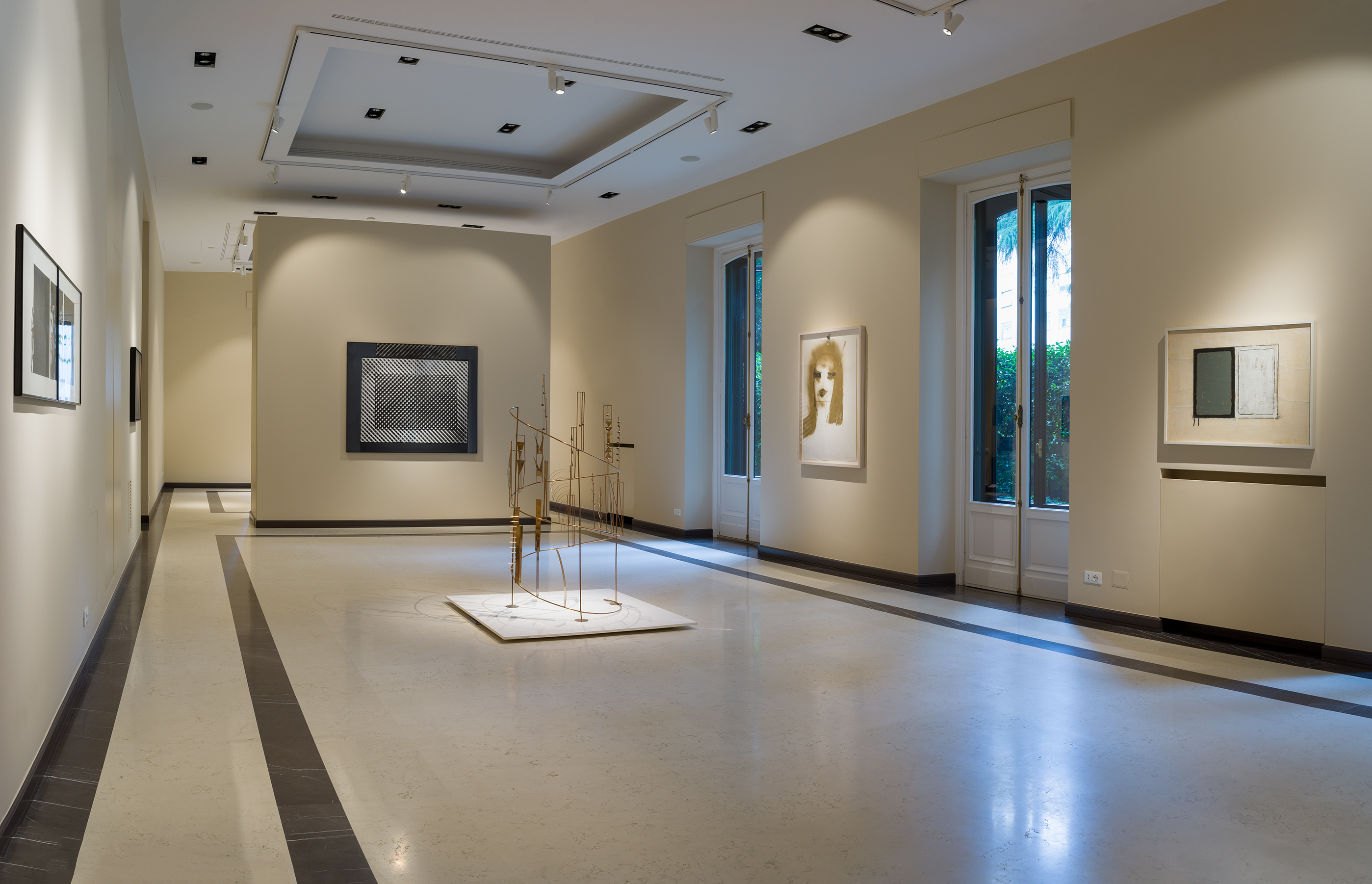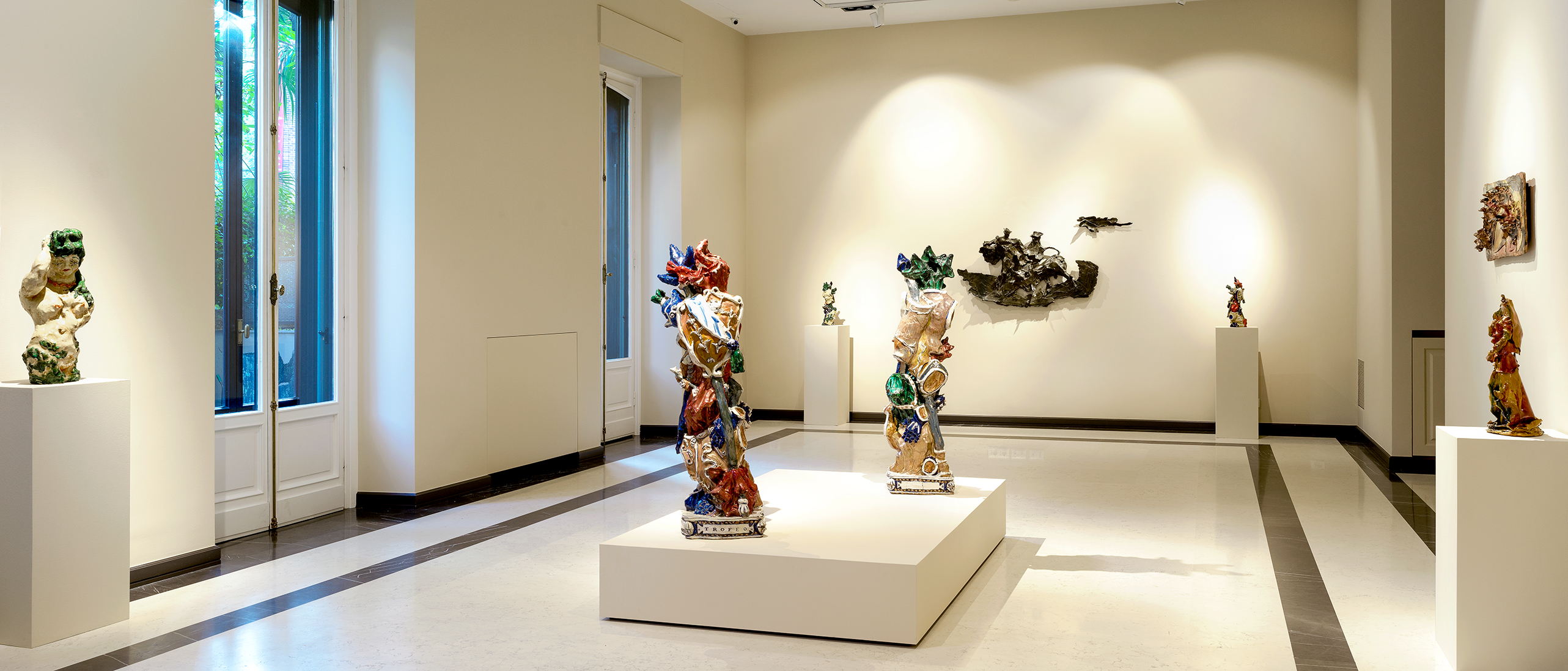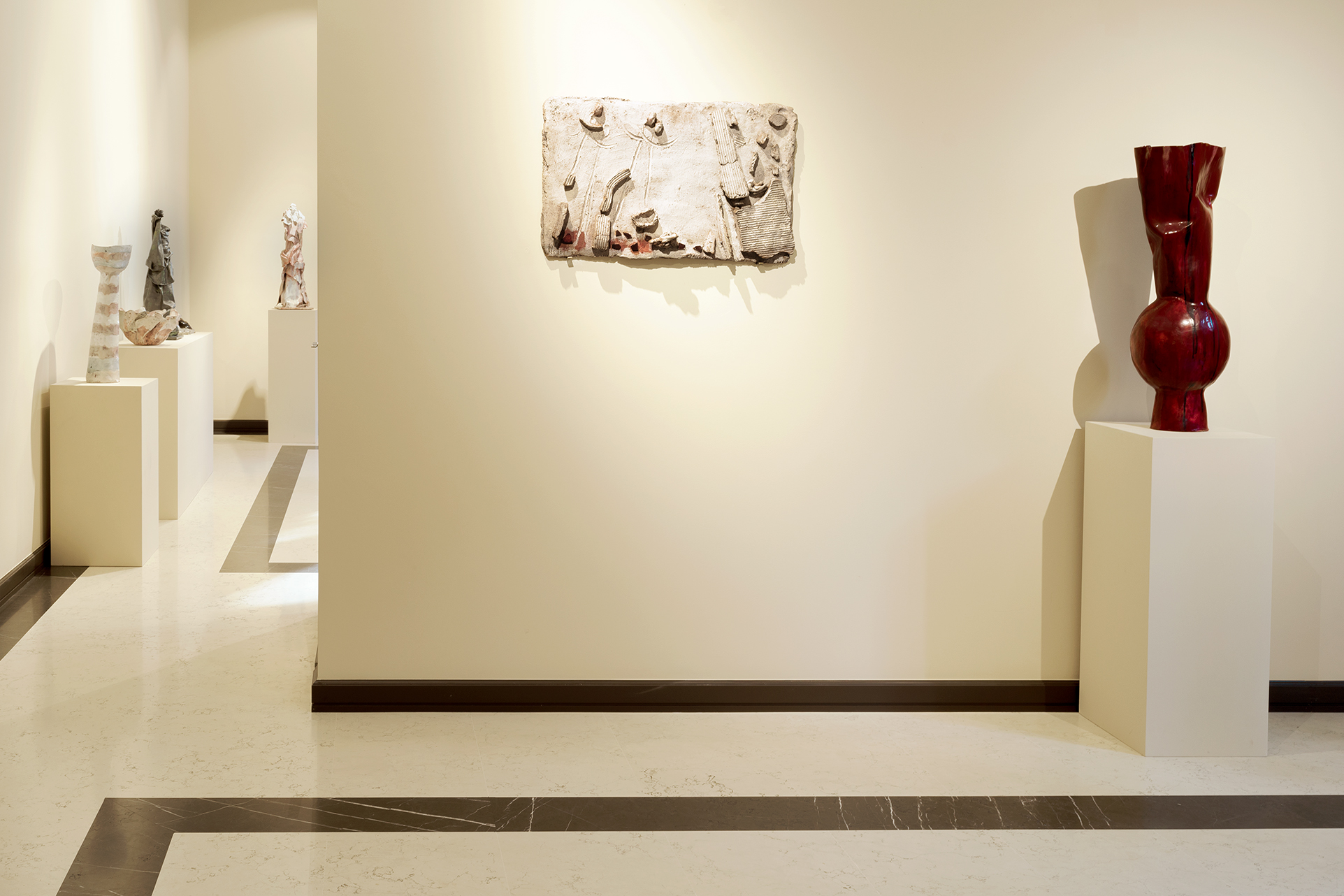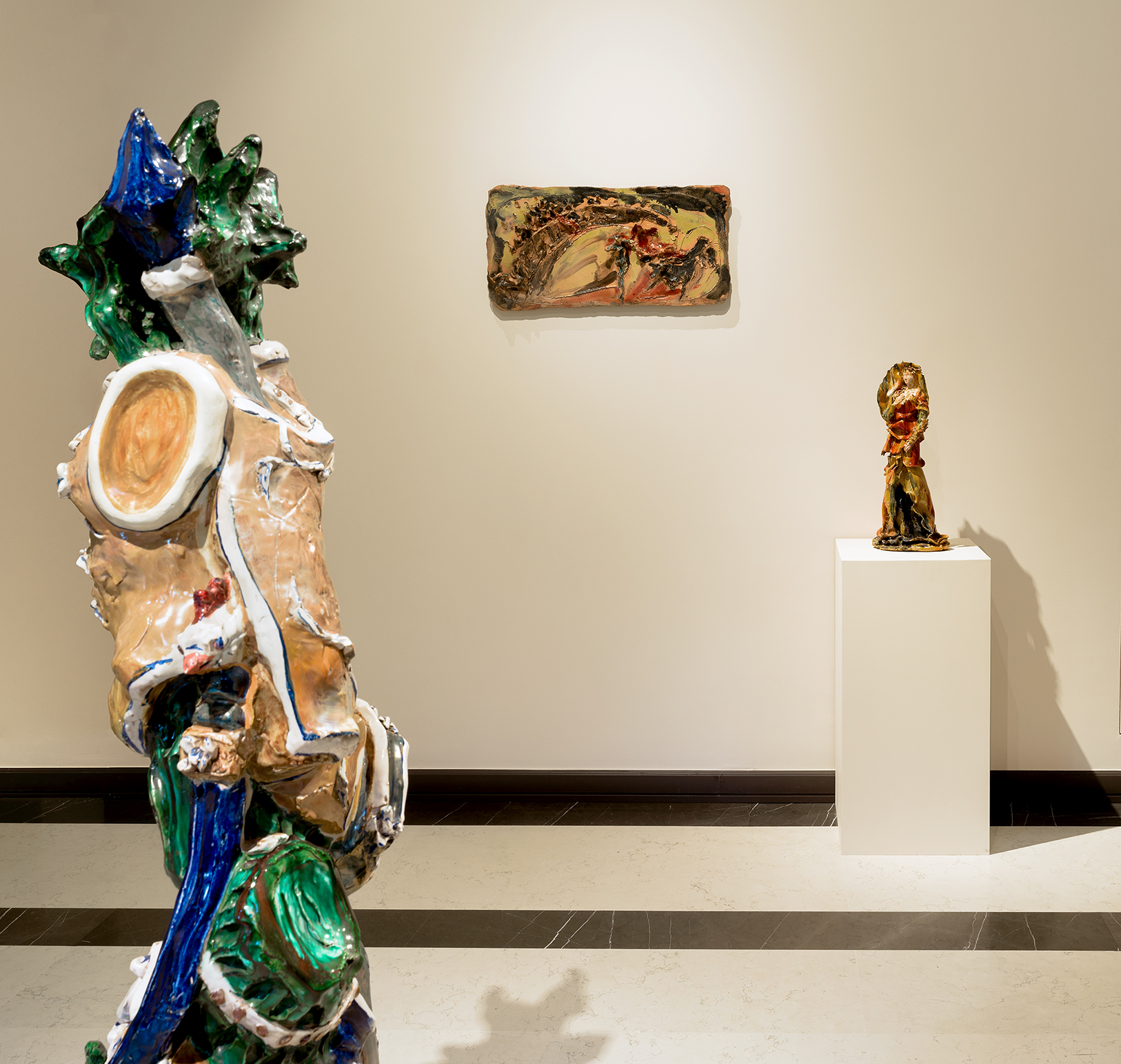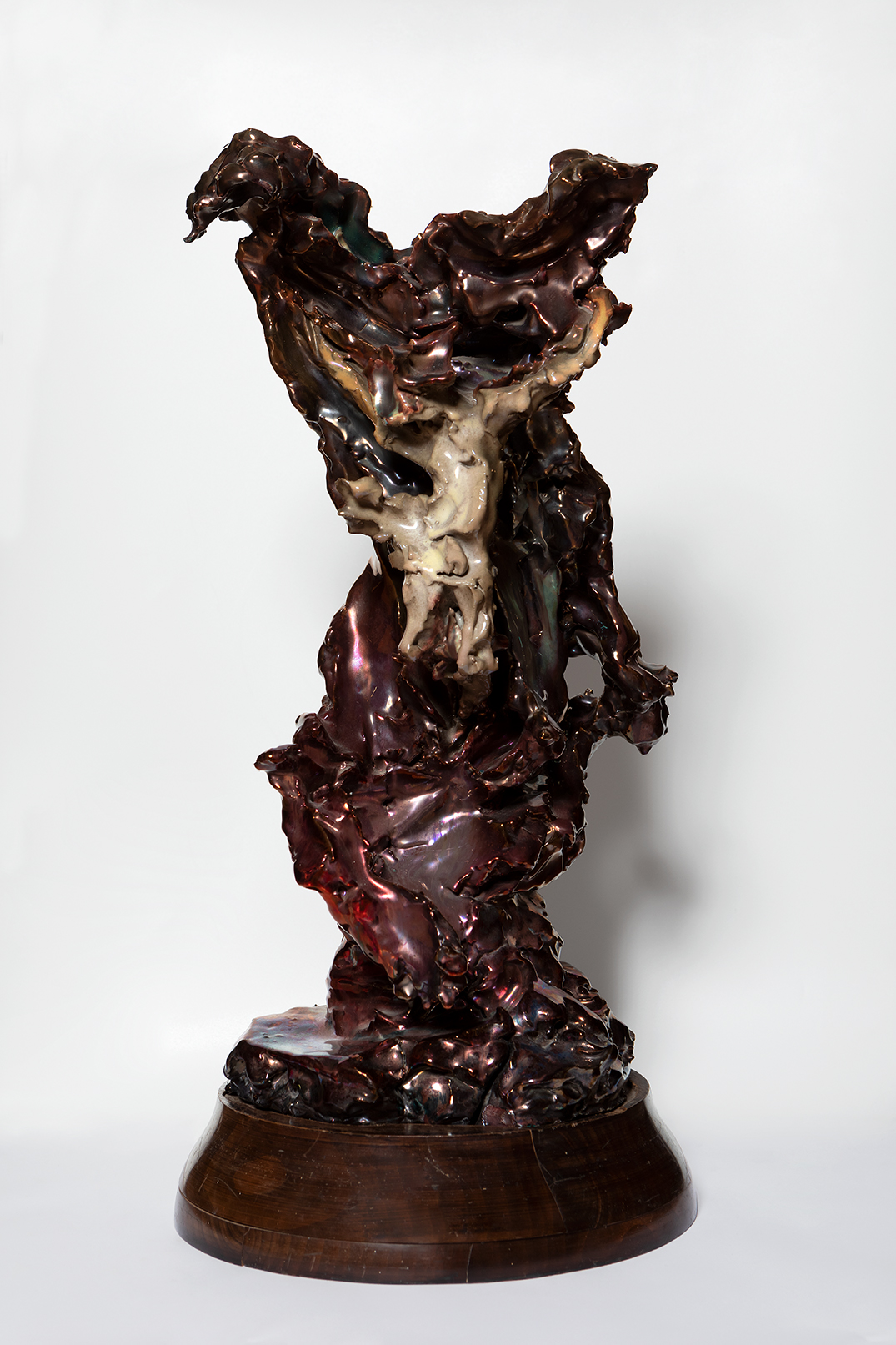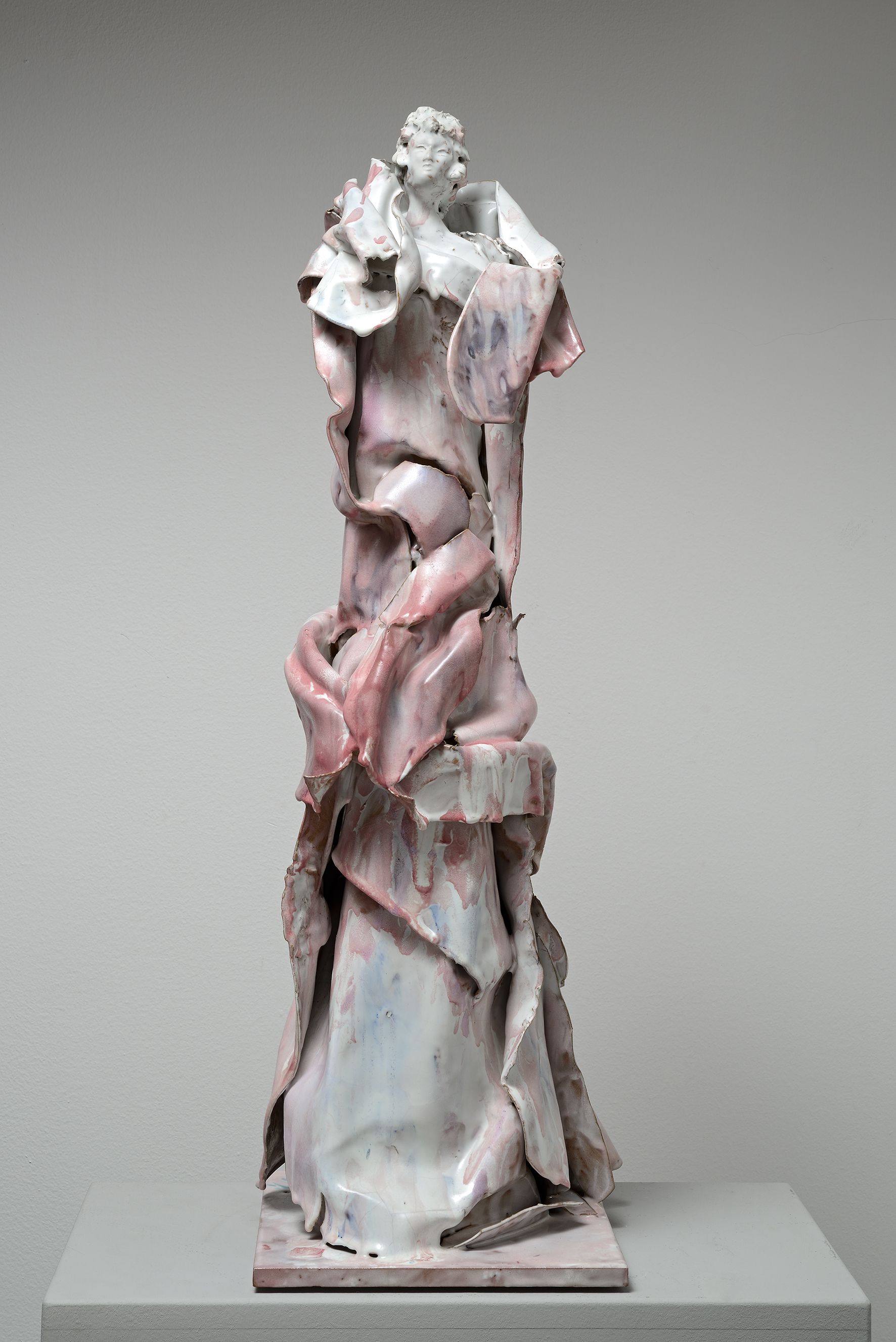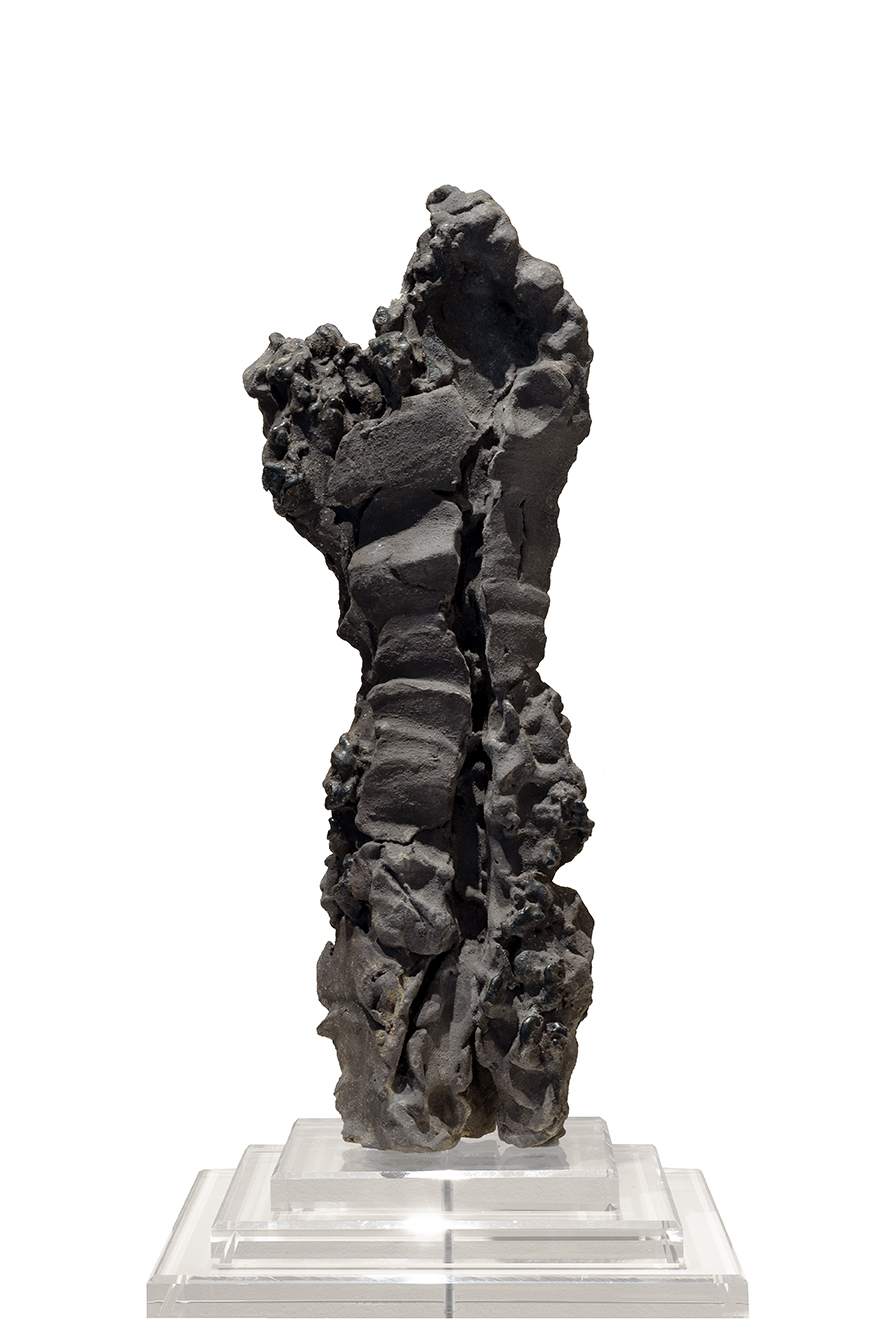ML Fine Art
LEONCILLO FONTANA MELOTTI | RITORNO AL BAROCCO
a cura di Andrea Bacchi
21 gennaio > 11 aprile 2021
ML Fine Art | Matteo Lampertico Milano, via Montebello 30
Il titolo della mostra riprende la famosa esposizione curata da Nicola Spinosa (Napoli, Ritorno al Barocco. Da Caravaggio a Vanvitelli, 2009 - 2010) in una nuova prospettiva: indagare il legame tra alcuni dei maggiori artisti italiani del XX secolo - Lucio Fontana, Fausto Melotti, Leoncillo - e la cultura barocca del Seicento, concentrando la ricerca in particolare su una selezione di opere in ceramica. Per questo motivo abbiamo deciso di affidare la curatela della mostra e del catalogo ad Andrea Bacchi, uno dei maggiori conoscitori della scultura italiana, nella convinzione che questo confronto debba essere affrontato su solidi base scientifiche. Fino a questo momento, infatti, la critica aveva fatto riferimento al Barocco in modo piuttosto vago e generico. “E’ necessario quindi un cambio nell’essenza e nella forma. E’ necessaria la superazione della pittura, della scultura, della poesia. Si esige ora un’arte basata sulla necessità di questa nuova visione. Il barocco ci ha diretti in questo senso, lo rappresentano come grandiosità ancora non superata ove si unisce alla plastica la nozione del tempo, le figure pare abbandonino il piano e continuino nello spazio i movimenti rappresentati.” (Lucio Fontana, 1951) E’ proprio Lucio Fontana con le sue parole a dare l’avvio alla riflessione alla base della mostra. La serie di tele da lui denominate Barocchi (1954-57) fa infatti riferimento alla componente dinamica del suo lavoro, elemento preminente del Barocco seicentesco, che traccia la strada verso soluzioni formali caratterizzate da vigorosi e intensi movimenti materici. E’ interessante notare che questa frase è contenuta nel Manifesto dello spazialismo, a dimostrazione del fatto che il passato, e segnatamente il Barocco, possano essere da stimolo per le nuove ricerche d’avanguardia. Anche Leoncillo, grazie soprattutto ai rapporti con il critico Roberto Longhi che lo definisce "il barocchetto spoletino”, trae ispirazione dalla scultura del XVII secolo, in primo luogo dall’opera di Gian Lorenzo Bernini, come peraltro accade anche per i principali artisti romani a lui contemporanei, quali ad esempio Scipione e Mario Mafai. In mostra vengono presentati per la prima volta riuniti due Trofei realizzati per l’Esposizione Universale di Roma del 1942 e la relativa coppia di bozzetti. Queste straordinarie sculture sono da Leoncillo modellate sullo sviluppo di masse dai colori vividi e netti, in cui l’oro, rimando ai modelli settecenteschi dei trofei cui l’artista si ispira, trasfigura le forme dei soldati, che da personaggi di guerra diventano insoliti ed eccentrici personaggi fantastici, quasi ad annullare il conflitto in quegli anni effettivamente in corso. Per quanto riguarda Fausto Melotti, i rapporti con l’arte barocca possono apparire meno evidenti, ma non per questo meno significativi, soprattutto nella produzione ceramica, che sembra ispirarsi alle forme leggere e guizzanti del barocchetto lombardo. Bene lo testimoniano le opere selezionate per la mostra, le eleganti figure femminili con le vesti dai panneggi avvolgenti e luminosi o la serie di vasi dalle diverse fogge e dai volumi mossi, che sembrano con le loro inconsuete forme e proporzioni contraddire ogni funzionalità. Rifarsi a tali fonti significava per questi artisti anche prendere le distanze, in modo consapevole e persino polemico, dall’arte del Regime, impersonata innanzitutto dal Novecento di Margherita Sarfatti, che proponeva invece un recupero della tradizione classica, in piena sintonia con le coeve aspirazioni del potere politico.
La galleria ha anche una sede a Londra:
ML Fine Art
15 Old Bond Street
W1S 4AX London
United Kingdom
+44 (0) 20 7493 1971
info@mlfineart.com
LEONCILLO FONTANA MELOTTI | RITORNO AL BAROCCO
Curated by Andrea Bacchi
21st January > 11th April 2021
ML Fine Art | Matteo Lampertico Milan, via Montebello 30
The title of this exhibition recalls a famous museum show curated by Nicola Spinosa (Ritorno al Barocco. Da Caravaggio a Vanvitelli, Naples, December 2009 - April 2010) but follows a new approach, investigating the shared interest in the baroque culture of three of the major sculptors of the Italian art scene; Lucio Fontana, Fausto Melotti and Leoncillo Leonardi. This shared interest can be found specially in their ceramic production, which is why we have decided to appoint Andrea Bacchi, recognized as an important expert in the field of Italian sculpture, as the curator of both the exhibition and its accompanying catalogue. We thought it is important that this study and comparison was made using a technical and specialist approach, especially because up until present the scholarship dealing with these three artists has only made reference to the influence of the baroque on their works in an elusively and generic way.“Therefore, it is necessary to change both the form and the essence.
It is necessary to go beyond painting, sculpture and poetry. Now it is required that art is based on the necessity of this new vision. Baroque is a guide on this matter, as its magnificence has not been yet exceeded, where time and the plastic form are unified and where figures free themselves from the pictural plane and continue their movements into the surrounding actual space.” (Lucio Fontana, 1951). Lucio Fontana is the artist who, thanks to his Barocchi series (1954-57), gave us the starting point for the thesis of this exhibition. The series of canvas which he named Barocchi in fact made reference to the dynamic component of his works. The elements were preeminent in the Baroque of the sixteen-century, which map out formal artistic solutions characterized by vigorous and intense movements. It is very interesting to notice that the above sentence is part of the Manifesto dello Spazialismo, as to demonstrate the fact that the past, in this case the Baroque, can be used as a stimulus to the artistic expression of avant-garde movements.
Leoncillo, thanks to his relationship with the art critic Roberto Longhi, who gave him the nick name “Barocchetto Spoletino” (Spoleto was Leoncillo’s hometown), was also inspired by sixteen-century sculpture. Like many other roman artists at the time, such as Scipione and Mario Mafai, Leoncillo was mostly influenced by and took inspiration from Gian Lorenzo Bernini (1598, Rome). For the first time since their creation for the Esposizione Universale in Rome in 1942, two of his Trofei and their corresponding preliminary sketches are included in the same display. Leoncillo modelled these extraordinary sculptures on the basis of the development of vivid masses of colors, in which gold take us back to eighteenth - century models of trophies from which the artist was inspired. In doing so he transfigures the forms of the soldiers who go from being warriors to becoming fantastical excentric figures which almost annul the very real conflict that in these years was taking place.
As regards to the work of Fausto Melotti, the relationship between it and Baroque art could seems less evident, however it must not be considered to be less significant especially in his ceramic works, which seem to be inspired by the delicate and flickering lines of the Lombard Baroque. Testimony to this can be found in the works chosen for the exhibition; the elegant female cloths in voluminous and light field draperies or the series of vases of diverse proportions and unique forms volumes which seemed to contradict any functionality.
By referring to these influences these artists also consciously and controversially distanced themselves from the art of the regime, personifies above all by Margherita Sarfatti, an art critic who on the other hand proposed a rediscovery of the classic tradition, which was thought to be more in harmony with contemporary political aspirations.
